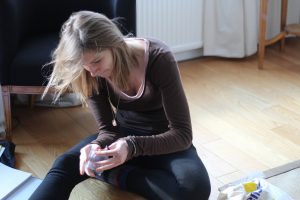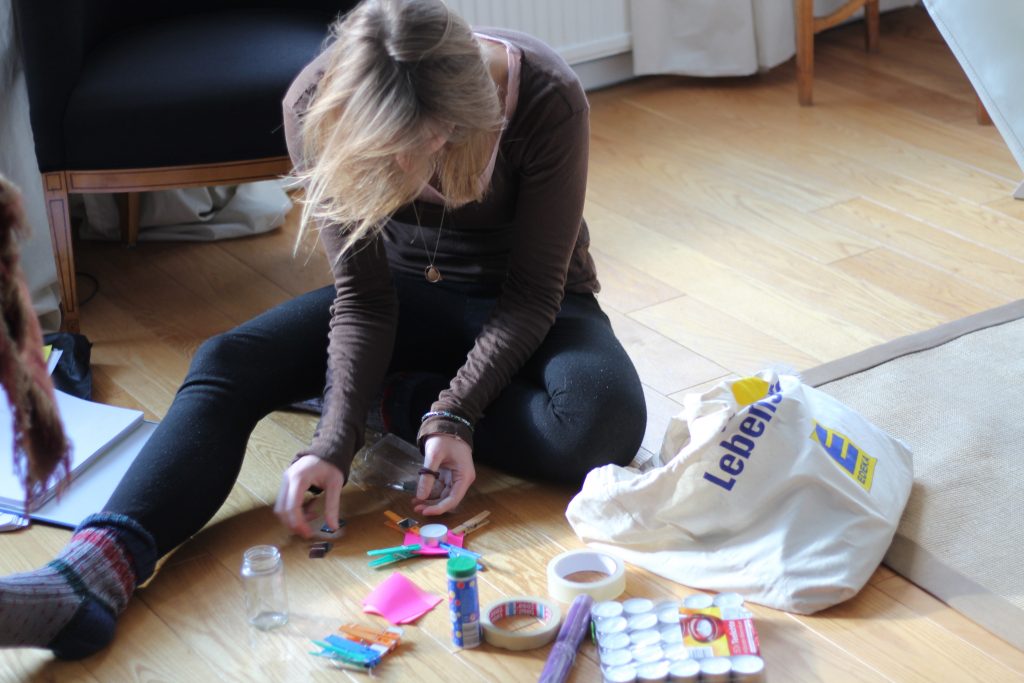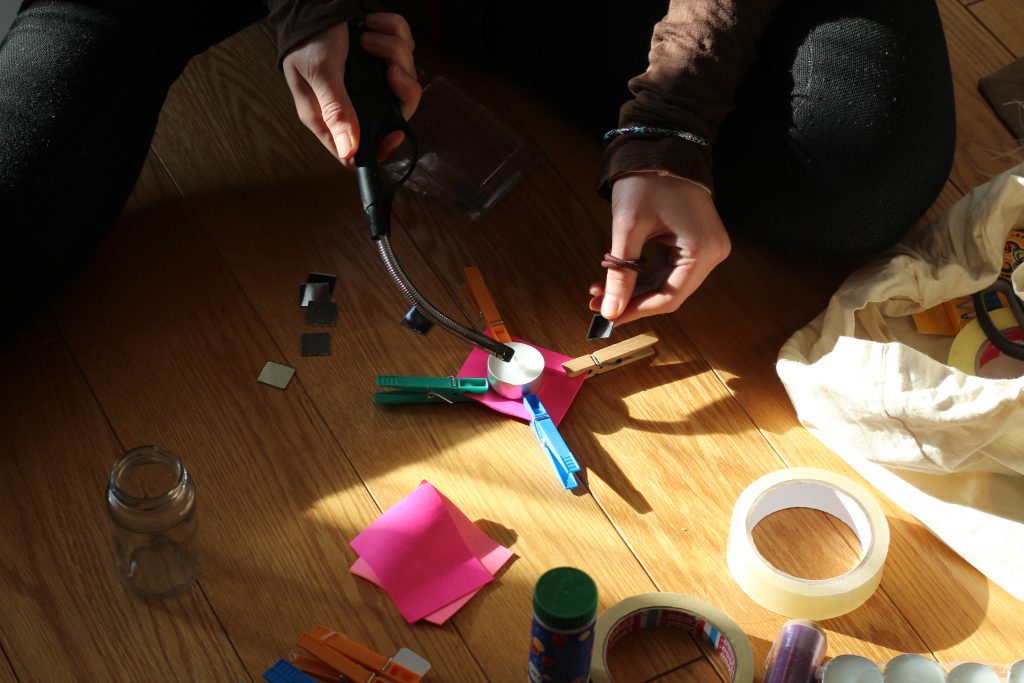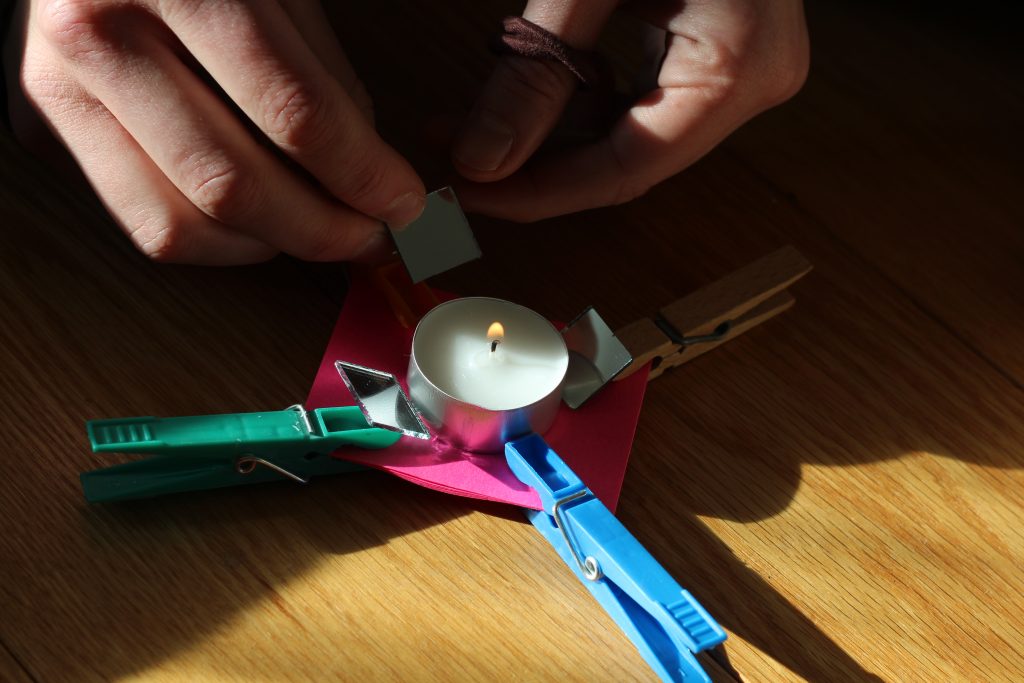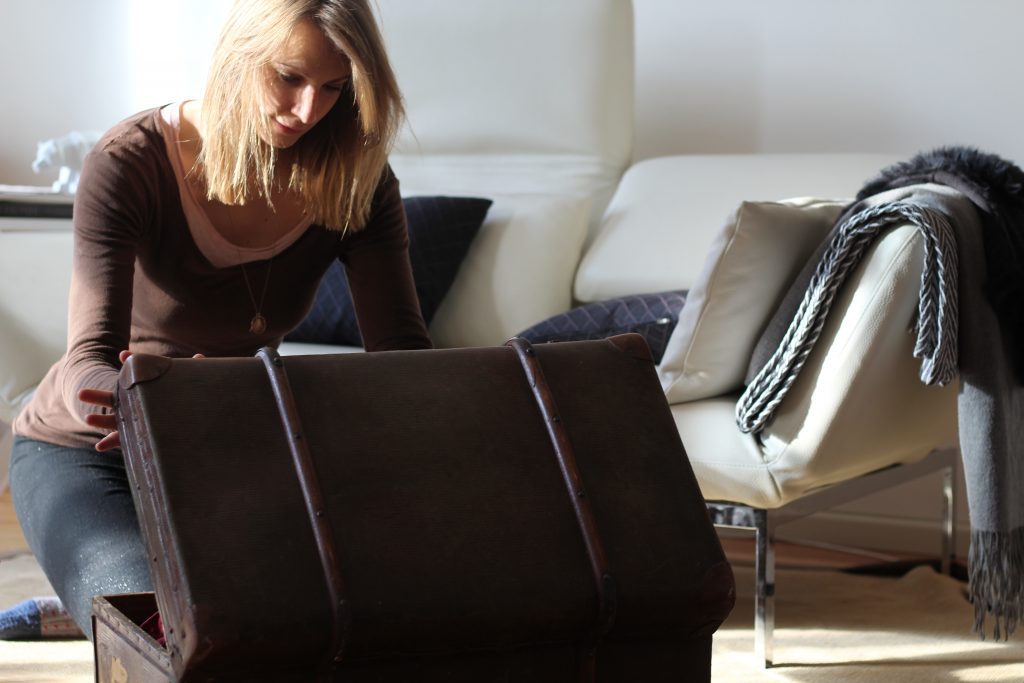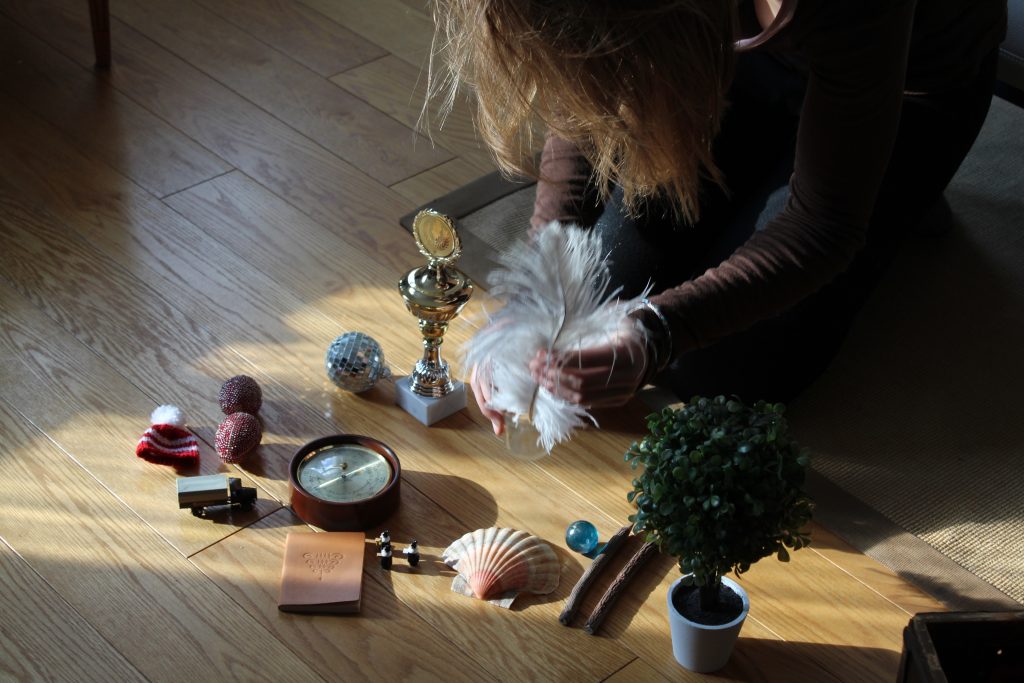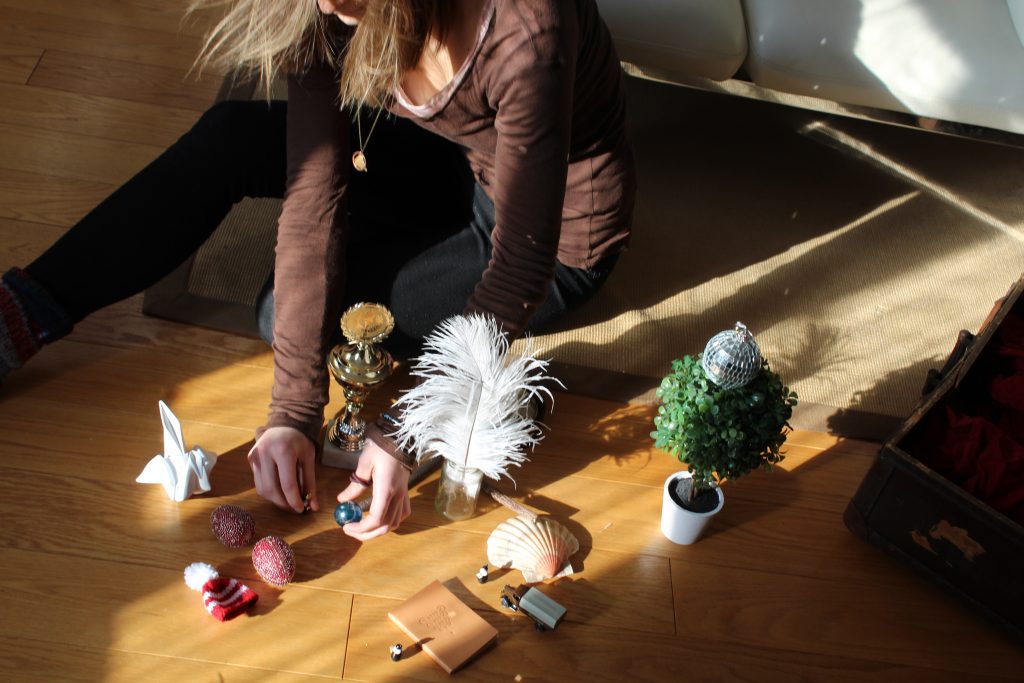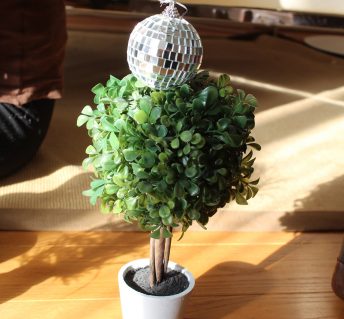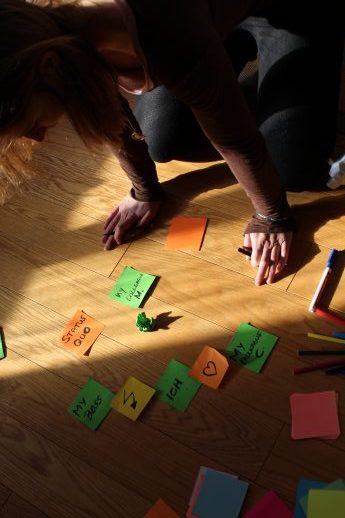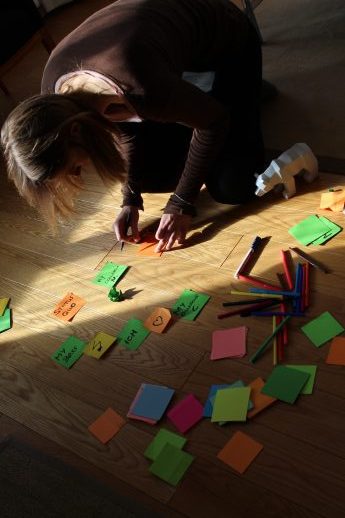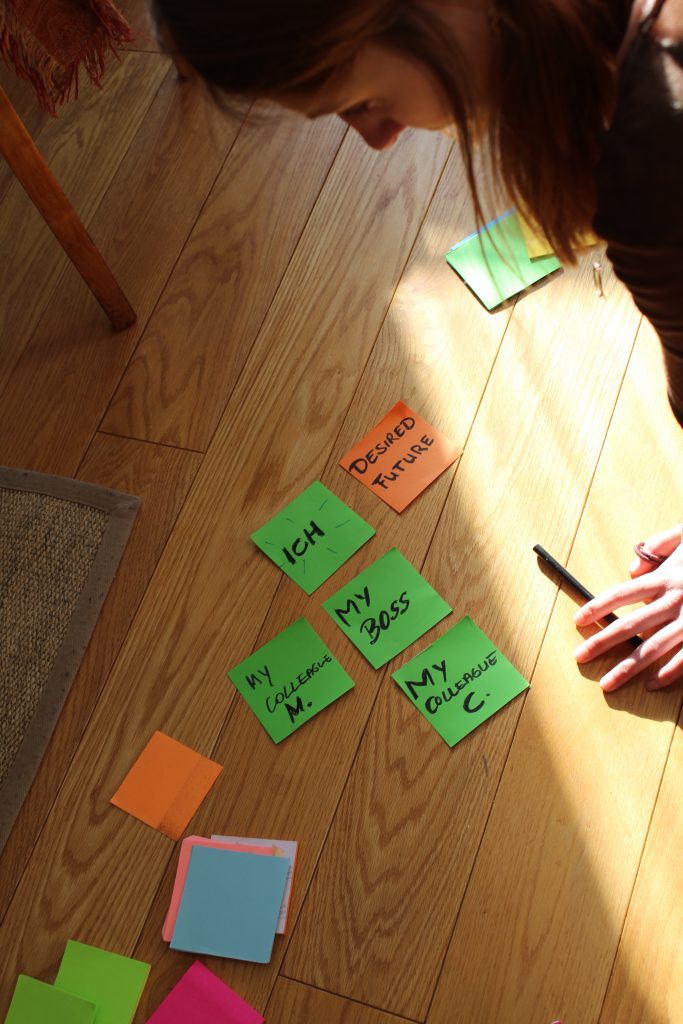Session 6
Counselling methods II
Welcome back!
How are YOU? How is your LIFE?
You are just about to start a second journey, a journey that has the potential to be different and equally meaningful. This part is about action, about your next level and – as always – about:
Who YOU dare to be and which IMPACT you wanna stand for?
Questions? Just contact us here.
Presencing
Presencing – crafting something and interpret its meaning
Context: difficult job situation, decision situations, ambiguity about what options exist for the future
Material: plasticine, pens, paper, objects, etc.
2. CREATIVE METHOD: Change the setting (for example sit on the floor or go to another table)
- Tell your counsellee about the creative method, but do not go into too much detail
- Provide material for the construction of a sculpture
- Give instructions: “Develop a sculpture that expresses your current situation (your world) and the future potential you are experiencing, and if you wish, tell me what you do and what it means, as you create the sculpture. If you prefer you can also build the sculpture in silence.
- Write down the remarks of the counsellee and wait patiently for the sculpture to finish
3. ANALYSIS: When the sculpture is finished, you walk around it together and look at it extensively from four different perspectives (starting at the front view and then going around it in a clockwise direction, switching between frog and bird’s eye view, take pictures of the sculpture)
- While walking around the sculpture ask all of the four following questions:
- What inspires you when looking at the sculpture?
- What are the hard conflicts and truths?
- What is dying and what wants to be born?
- What is the essential core?If the counselee would like to change something in the process, that is possible.
4. TRANSFER: Switch back to the typical counseling setting and evaluate.
- Ask the counsellee: “What did you realize? What moves you most?”
- Reflect your observations during the process back to the counselee (without interpretation!)
- Ask the counsellee to change the sculpture; “If you like to try something, you can always undo it.”
5. SOLUTIONS: “What are the next steps? Which solutions can you derive from the sculpture and your handling of the situation?”
Symbols
Reading your subconsciousness 😉
Context: diffuse feeling of non-clarity, make sense of emotional state
Material: have a box or bag with various toys, objects & stuff
2. CREATIVE METHOD: Change the setting (for example sit on the floor or go to another table)
- Tell counsellee about the creative method, but do not go into too much detail
- Provide the box with objectives and spread them on the floor
- Give instructions: “Try to represent your topic with these items”
- The counsellee builds his topic with the items
- The counsellor does not intervene, allowing enough time, there is no time limit
- The counsellor is on the same eye level on the ground and keeps enough distance and does not dive into the action, leaves the symbols untouched
- The counsellor encourages the counsellee to try out changes.
3. ANALYSIS: Keep unused items within reach. Linger long in the analysis and let the counselee experience and feel.
- Ask questions to support the counsellee to make sense of the symbol/constellation.
- “What do you notice about the symbol X (on the constellation)?
- “What do you feel when looking at the symbol X (the constellation)?
- As counsellor you can call for a change of perspective, e.g. stand up or walk around it, you can also voice theses and make observations, but no interpretations
4. CHANGE:
- “What do you want to change about the symbol X (the constellation)?
- Add or drop symbols to develop the symbolic image. Your counsellee should have all the freedom to deal with the symbols (put away, paint, destroy, …)
5. TRANSFER: Switch back to the typical counseling setting and evaluate. Take pictures of the symbols
- Ask questions: “What does that mean in terms of your question? What does that mean in reality?”
- Develop action and implementation plan: “What’s next?”
Mini-constellations
Explore hidden people dynamics
Context: team situations, friendships – inner circle – family
Material: post-its, pens
2. CREATIVE METHOD:
- Give instructions: “Write down any person that is involved in your current situation on a post-it. Position those post-its around your own post-it according to your understanding of the situation and dynamic. While you position them talk about how it is for you.”
3. ANALYSIS:
- Ask questions to support the counsellee to make sense of the constellation: “What do you notice about the constellation? What do you feel when looking at the constellation? What do you value about it?”
- Counsellor calls for a change of perspective, e.g. stand up or walk around it.
- Counsellor can voice theses and make observations, but no interpretations.
- Take a picture.
4. CHANGE:
- Give instructions to position the post-its in the ideal placement: “What do you want to change about your current constellation? What would be your preferred state? What about this change is so important for you? What do you value in interactions and interpersonal dynamics?”
- Take a picture.
5. TRANSFER:
- Ask questions: “What does that mean in terms of your question? What does that mean in reality? What can you do yourself to change the dynamic? What do you need to accept?”
- “What’s next?”
Some homework
Whohooo! That was fun! Let’s practice!
If you like just try out some of the above-mentioned techniques or come up with your own! Share them with us if you feel like it!

